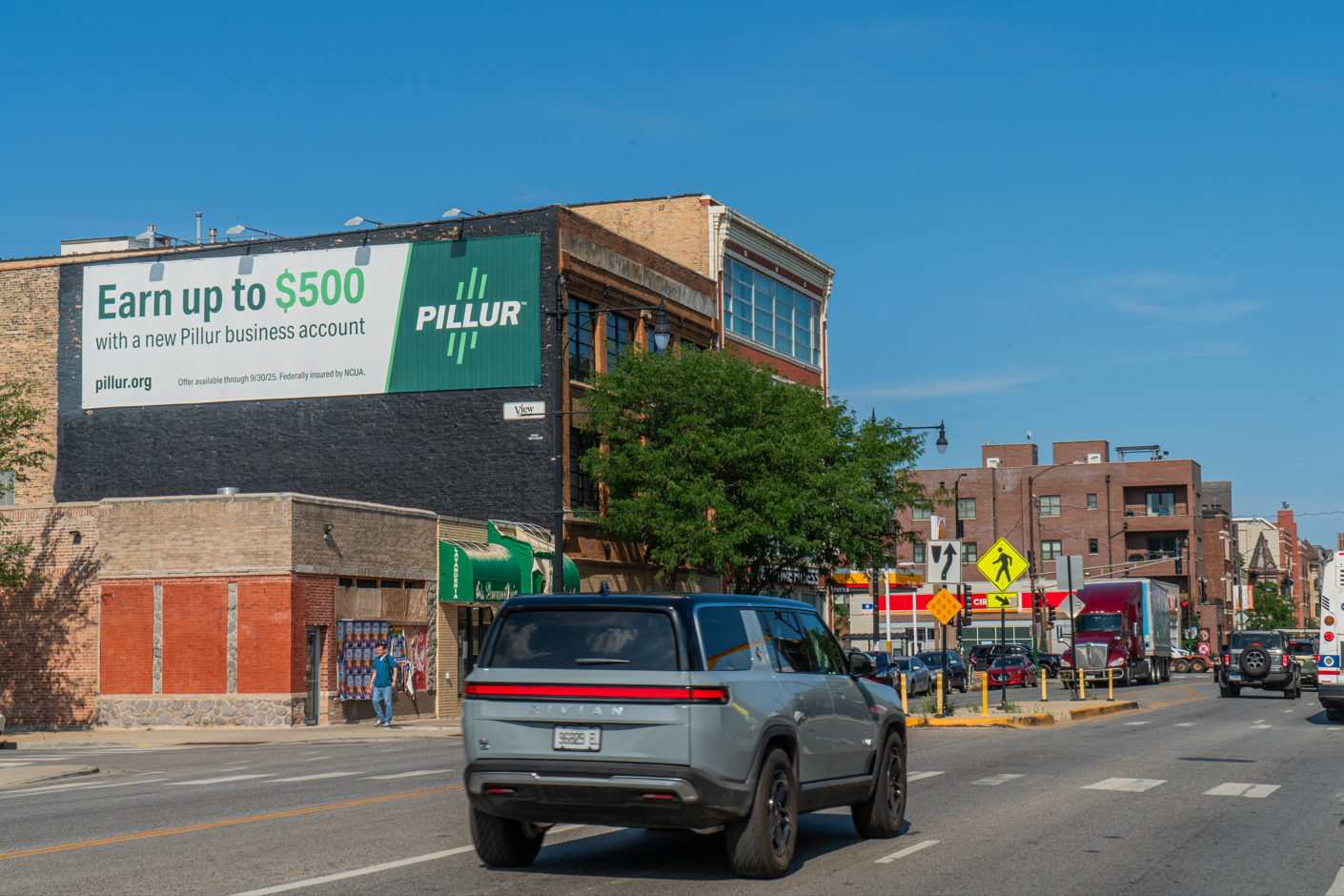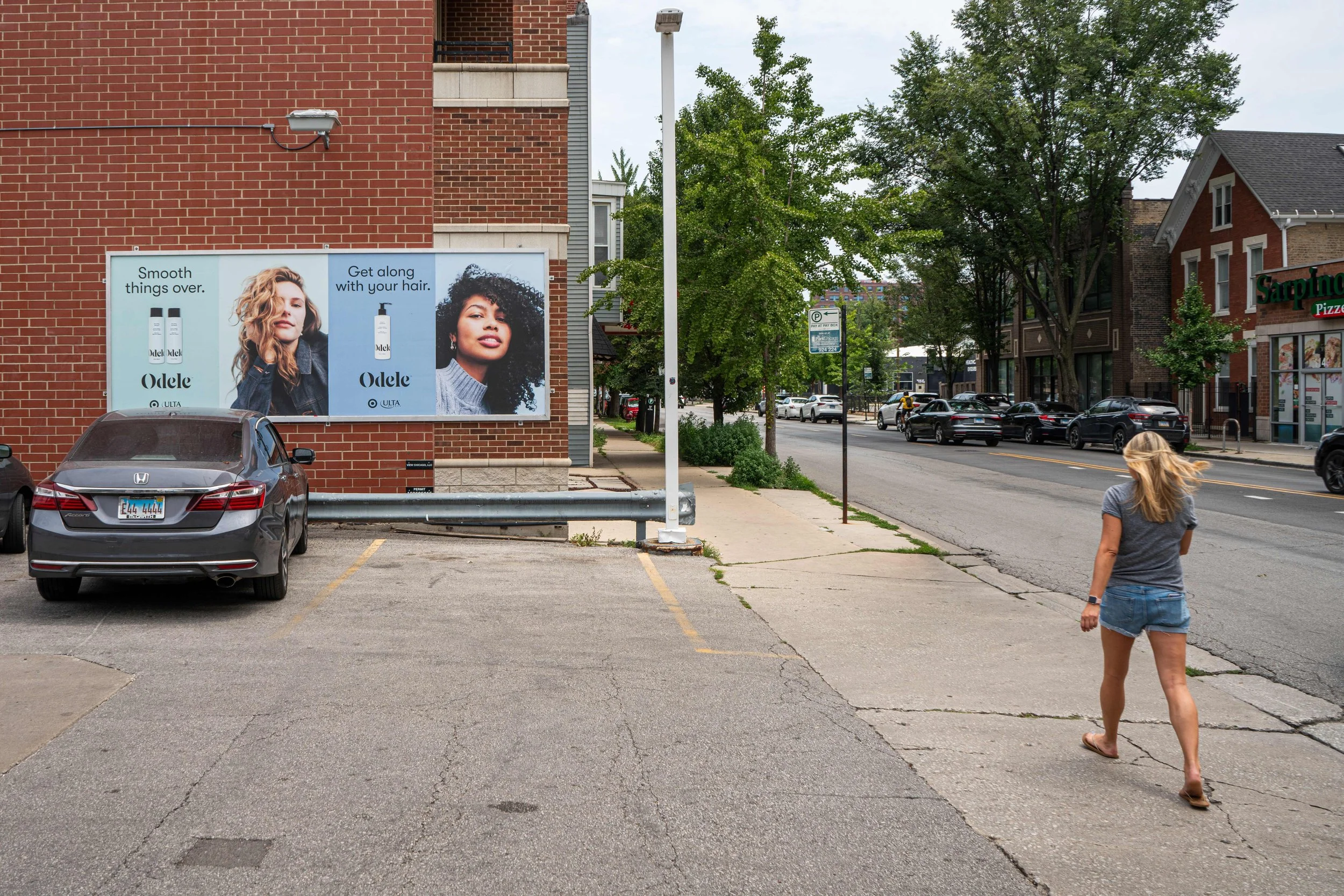Billboard advertising remains one of the most powerful ways to create real-world brand recognition, especially in a vibrant, densely populated city like Chicago. From Lakeview to Logan Square, the right billboard can turn a passerby into a paying customer. But if you're running your first campaign, the process might feel overwhelming. How do you know where to place your ad? How do you measure success? And how do you make sure you’re getting real billboard ROI?
At View Chicago, we work with first-time advertisers every day—from local dentists and independent realtors to national chains looking to make an impression in the Chicago market. Over the years, we’ve noticed some patterns. Many new advertisers make the same mistakes when it comes to launching their first outdoor campaign.
In this guide, we’ll walk you through the top eight mistakes first-time advertisers make with billboard campaigns—and more importantly, how you can avoid them. Whether you're exploring options for a small business billboard or trying to understand how billboard advertising in Chicago really works, these tips will set you up for a successful, high-ROI campaign.
Mistake #1: Choosing the Wrong Location
Not all billboard locations are created equal. First-time advertisers often assume the more traffic, the better—but that's not always true.
Traffic doesn’t always equal targeting. A massive billboard on a busy expressway may reach tens of thousands of people, but if they’re not your audience, you’re paying premium prices for little return. A fitness studio in Bucktown doesn’t necessarily need views from commuters on the Dan Ryan Expressway.
Not every high-traffic area makes sense for every brand. Choosing a high-profile location is tempting, especially if you want to "see your ad in lights." But what matters more is who sees your ad. A small business billboard targeting local families might perform better near schools or shopping centers than near downtown office buildings.
Chicago is a city of neighborhoods—each with its own personality. Wicker Park isn’t the same as Bridgeport, and Edgewater doesn't behave like West Loop. Knowing the demographics of each area is critical. This is why we start every campaign with a deep dive into your ideal audience.
Use location data and demographic insights to make informed choices. Geolocation data tells us who travels past each sign, including their age, income level, and even buying behavior. This allows you to match your billboard with your audience rather than going in blind.
Align placement with your audience, not just your ego. It’s easy to get excited about seeing your brand on a massive Wallscape on Michigan Avenue. But if your customers live in Oak Park, they may never see it. It’s not about what impresses your competitors—it’s about what drives results.
Explore alternative formats like HotSpots or Street Furniture for local targeting. These formats offer street-level visibility in specific Chicago neighborhoods. For small businesses, these options often provide better reach and stronger ROI than traditional billboards.
Example: A heating and cooling business serving residential clients saw better results advertising near a big-box hardware store in Skokie than from a highway billboard downtown. Why? Because their ideal customer lives nearby and is already thinking about home maintenance.
Mistake #2: Treating Billboard Ads Like Digital Ads
First-time advertisers often fall into the trap of using billboards the same way they use online ads. But billboards are a different beast altogether.
Billboards are a top-of-funnel medium—they aren’t built for instant clicks or conversions. Unlike digital ads, billboards can’t offer a direct CTA button or trackable engagement metrics in real-time. Their job is to build brand awareness and stay top-of-mind.
Too much text or CTA-heavy messaging doesn’t work. A common mistake is trying to cram too much information onto a single board. Think about your own experience: when was the last time you read a full paragraph while driving 40 mph?
Billboards should serve as brand anchors, not digital flyers. While it’s important to include your brand name or a memorable slogan, less is more. You want your message to be grasped instantly.
Use billboards to reinforce your visual identity. Think bold colors, strong imagery, and recognizable logos. The most effective billboards are often the simplest.
Create complementary digital campaigns to drive action. If your billboard campaign is doing its job, it will spark curiosity. Make sure that when people Google your brand later, they land on a compelling website or see a retargeted ad.
Leverage your billboard as part of a cross-channel marketing strategy. For example, running social media ads that mimic your billboard's creative can deepen brand recall and increase conversion rates over time.
Example: One of our clients ran a billboard campaign using a bold image and three words: "Your Smile Matters." That simple, creative outperformed another client’s wordy design that included a phone number, address, and service list. Why? Because it grabbed attention and sparked curiosity, not confusion.
Mistake #3: Not Setting Clear Goals
Billboards can be incredibly effective, but you have to know what you want them to do.
ROI is subjective—you can't measure success without a benchmark. Are you trying to increase brand recognition? Drive phone calls? Get new leads? Each of these goals requires different creative, placements, and tracking methods.
Some advertisers expect sales, others want exposure. A brand campaign focused on awareness will look very different than a campaign trying to generate direct phone calls. Without clearly defining your objective, it’s impossible to measure success.
Set a primary objective for your campaign. Don’t try to do everything at once. If your goal is brand recall, your creative should focus on repetition and visibility. If you want lead generation, you might add a QR code or unique call tracking number.
Use QR codes, custom URLs, or call tracking to measure response. These tools help you attribute results directly to your billboard. They also allow you to A/B test messaging across multiple locations.
Treat your billboard as part of your broader marketing mix. It's not an isolated tool—it's a piece of a bigger puzzle. The strongest campaigns align their billboard messaging with web, email, and social content.
Example: A dental office in Bucktown told us they needed four new patients a month to justify a billboard campaign. We placed two targeted boards nearby and helped them develop simple, clear creative which resulted in success.
Mistake #4: Underestimating Design & Message
Even the best location can’t make up for bad design. First-time advertisers often don’t realize how critical visual impact is in billboard advertising.
Poor design equals lost opportunity. If your message is hard to read or visually cluttered, people will ignore it—even if they drive past it every day. You only have a few seconds to capture attention.
You have 3–5 seconds to make an impression. That’s not enough time for complex narratives. Your message needs to be understood instantly.
Think of your billboard as a snapshot. One image. One headline. One emotional reaction. Anything more is usually wasted.
Use large imagery, bold color, and minimal text. The most effective billboards use design to evoke a feeling or convey a singular message. If someone has to squint or guess what you’re selling, you’ve already lost them.
Tailor the message to the viewer’s mindset and location. If you’re advertising near an exit ramp, give directional cues. If you’re promoting a local store, mention the neighborhood.
Work with designers who understand out-of-home advertising. Designing for screens is not the same as designing for 14-foot-high signage. Scale, resolution, and viewing angles all matter.
Example: A campaign for Timbaland featured a single, oversized image of a rugged boot. That was it. No words, no logo. It worked because it was bold, clean, and instantly recognizable. Viewers connected the image to the brand without effort.
Mistake #5: Expecting Overnight Results
Billboards don’t work like flash sales. They take time to build recognition and influence behavior.
First-time advertisers often assume they’ll see instant results. They expect the phone to start ringing or website visits to spike overnight. When that doesn’t happen, they assume the billboard "didn’t work."
But billboard ROI builds over time. It’s a long game—people see your ad multiple times before taking action. The more frequently they encounter your message, the more likely they are to recall and trust your brand.
Don’t judge your campaign too early. Short-term visibility rarely drives meaningful impact. Run your campaign for at least 3 to 6 months to see how it influences long-term brand growth.
Understand the role of frequency and familiarity. Repetition breeds familiarity, and familiarity breeds trust. Billboard advertising in Chicago isn’t just about impressions—it’s about consistent, repeated exposure in the right places.
Work with a team who can monitor, optimize, and adapt. If your campaign isn’t working after several weeks, that doesn’t mean it’s a failure. It may just need a better location, different messaging, or more time.
Example: McDonald’s runs the same directional billboard campaigns on repeat throughout Chicago. Why? Because they know that brand familiarity is what drives foot traffic—and repetition is key.
Mistake #6: Ignoring Seasonal Timing
A billboard campaign’s performance can fluctuate throughout the year depending on timing—and overlooking this can hurt your results.
Your message may not land if the timing isn’t right. For example, a billboard promoting HVAC services may get more traction during a heatwave than in mild spring weather. Timing your message to match consumer urgency can drive stronger ROI.
Chicago seasons impact behavior and traffic flow. A winter campaign in the suburbs may reach fewer pedestrians, while summer events like Lollapalooza or street festivals bring a boost to foot traffic in downtown areas.
Plan around local events and school calendars. Knowing when high-traffic events or seasonal changes happen in your area can help you get the most out of your spend. For example, back-to-school season is a great time for campaigns targeting families.
Adjust your messaging based on the time of year. A coffee brand might highlight iced drinks in July and warm beverages in January. Aligning visuals with the season makes your billboard more relatable.
Example: A local tutoring company timed their billboard campaign to launch two weeks before the new school year. That small decision helped boost inquiries from parents looking to get ahead of the academic calendar.
Mistake #7: Forgetting to Align with the Buyer’s Journey
Billboards can be used at different stages of the buyer’s journey—but if you don’t align the messaging, you may confuse or lose your audience.
Brand awareness messaging isn’t the same as a direct offer. Early-stage buyers need clarity about who you are and what you do. Mid-stage buyers need reinforcement. Late-stage buyers are looking for reasons to act now.
Failing to match your creative to the stage of awareness can result in poor performance. A billboard that says “Schedule Your Free Consultation Today” is effective for warm leads but may fall flat if your audience doesn’t know your brand yet.
Use billboards to warm up cold audiences and guide them forward. The goal is not always to close a sale—but to push the viewer one step closer. Make them Google your name, follow you on Instagram, or visit your location.
Create campaigns that ladder across multiple billboards or time frames. For example, start with a high-level message in month one (“We Keep Chicago Smiling”), then move to a mid-funnel ad (“Voted Best Dental Practice 3 Years Running”), and finish with a call to action (“Now Accepting New Patients in Bucktown”).
Example: A local gym ran a three-month campaign with three different creatives. The first was purely motivational. The second focused on their new classes. The third included a free trial offer. This approach helped them attract new sign-ups while building brand credibility.
Mistake #8: Not Taking Advantage of Data & Reporting
Too many first-time advertisers run their campaign and hope for the best—but never measure what actually happened. Modern billboard campaigns can be data-rich. From impressions and demographic exposure to mobile device tracking and code scans, there are many ways to gather real feedback. Relying on “gut feel” won’t deliver insight. Just because a billboard looks good doesn’t mean it’s working. Data gives you the evidence you need to refine your strategy. Use unique URLs, promo codes, or QR codes to track response. Even small changes like updating a phone number to a call-tracking line can offer big insights into where leads are coming from.
Partner with a billboard company that offers transparency. At View Chicago, we use analytics tools to help clients understand what worked, what didn’t, and what to improve next time.
Make post-campaign reviews part of your process. Just like you’d analyze an email campaign or Google Ads performance, look back at your billboard data and ask: What would we do differently next time?
Billboards are a powerful tool—but only when used correctly. If you’re planning your first outdoor campaign, avoiding these eight common mistakes can be the difference between wasted spend and measurable success.
Whether you’re a small business owner testing your first billboard in Chicago or a growing brand looking to make a splash, remember: success comes down to location, clarity, timing, consistency, and strategic design.
The good news? You don’t have to figure it out alone. At View Chicago, we specialize in helping first-time advertisers plan, launch, and optimize outdoor campaigns that deliver results.
Ready to get started? Reach out to our team for a free consultation, and let’s build a billboard campaign that works for you.




